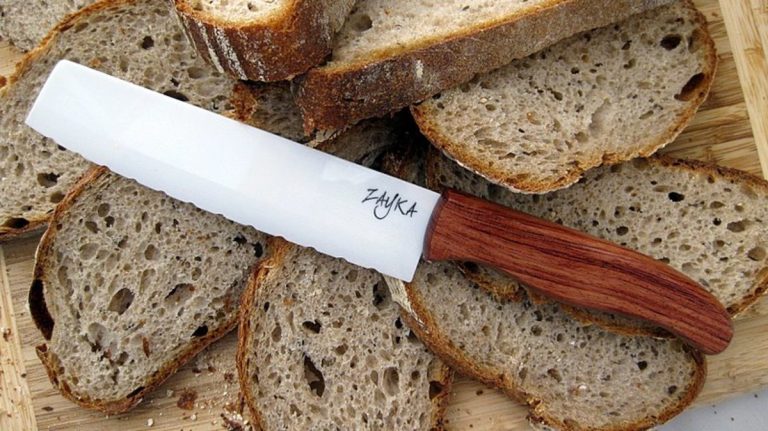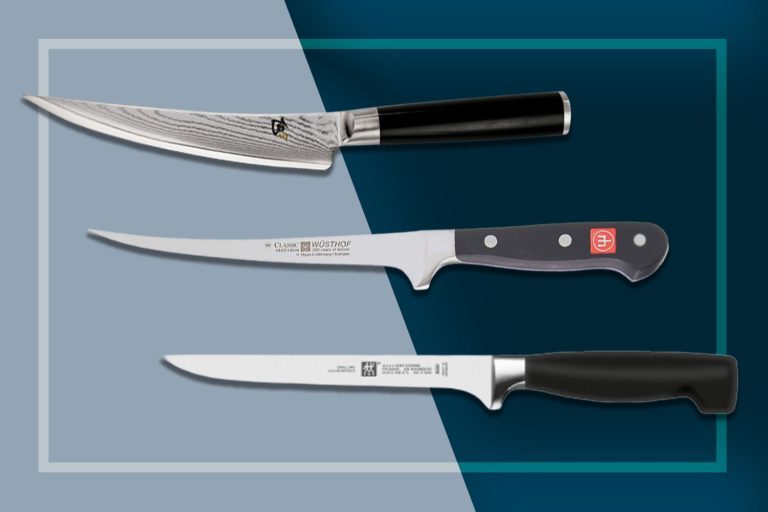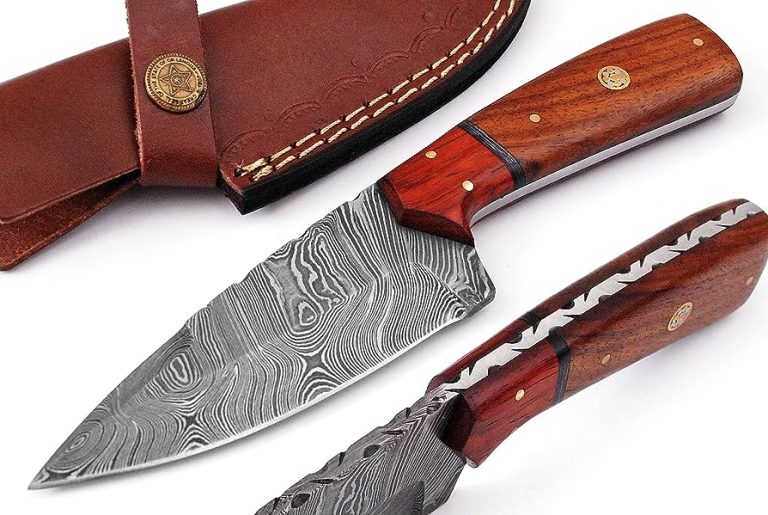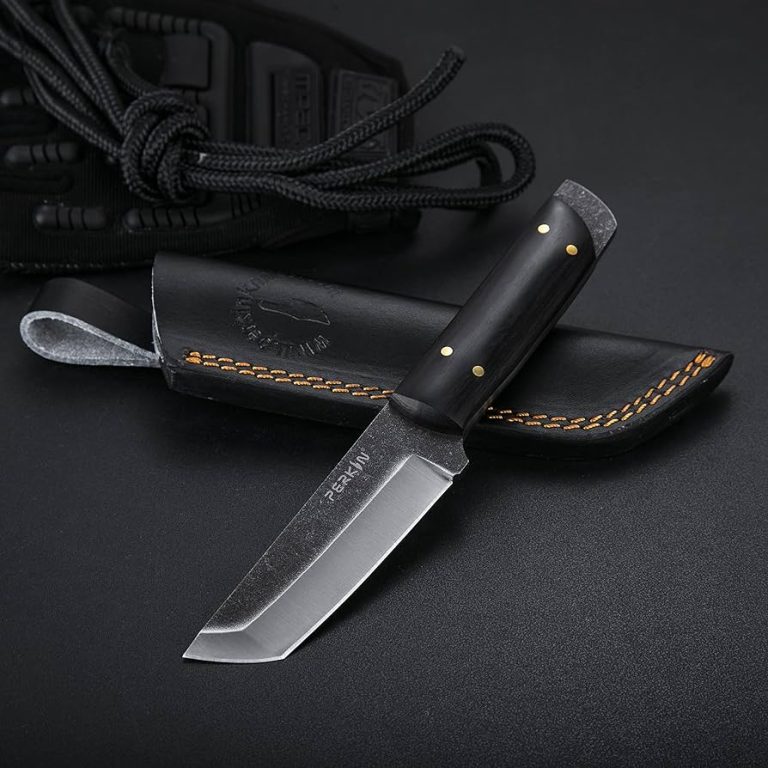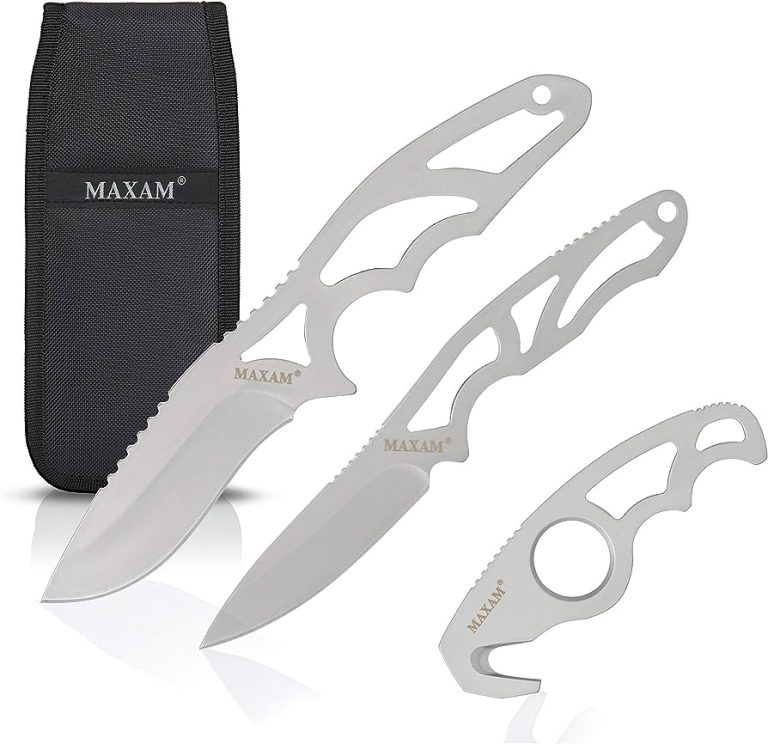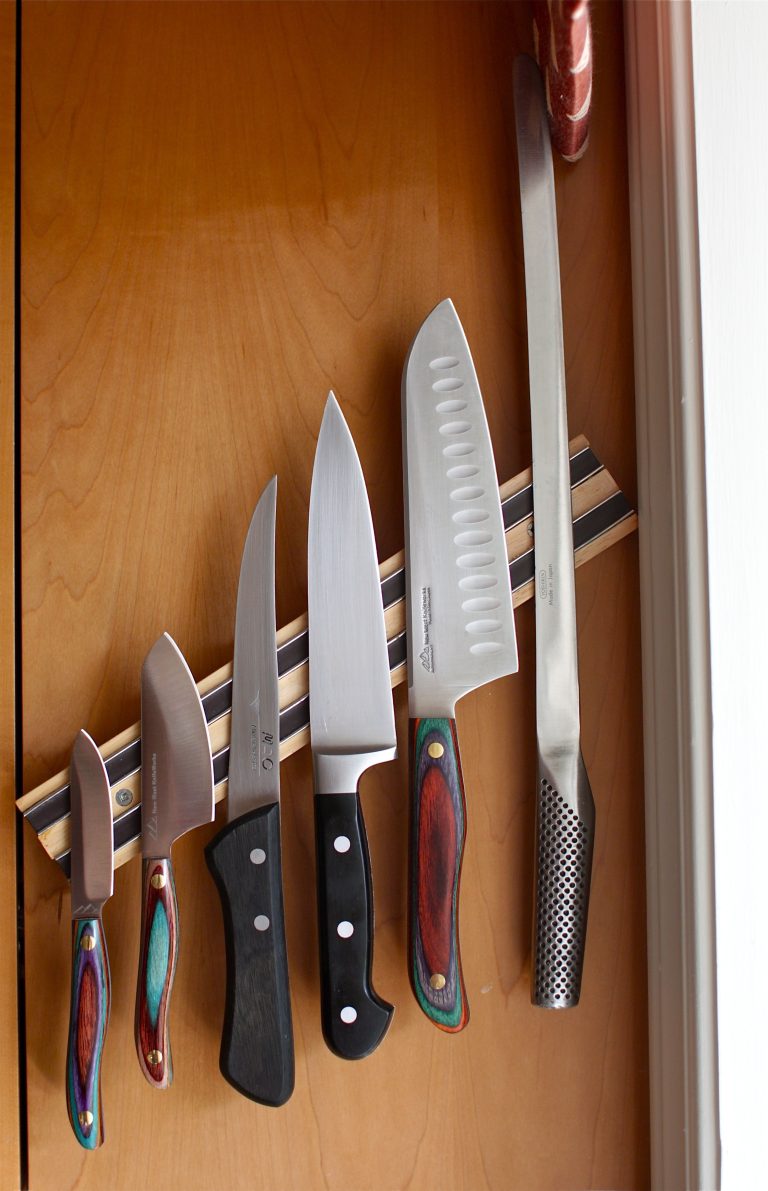The Survivalist’S Guide to Hunting Knives
A survivalist’s guide to hunting knives: A comprehensive overview of essential features and best practices. In this guide, we explore the key factors to consider when choosing a hunting knife, including blade type, handle design, and blade material.
We also discuss the importance of maintenance and sharpening techniques, as well as highlighting top-rated hunting knife brands for various budgets and preferences. Whether you are a seasoned hunter or a beginner looking to invest in a reliable tool for outdoor adventures, this guide will provide valuable insights and help you make an informed decision when selecting a hunting knife.
The Different Types Of Hunting Knives
The Different Types of Hunting Knives
Hunters and survivalists often choose **fixed blade knives** due to their durability and strength. These knives feature a **solid blade** that is permanently affixed to the handle, making them less likely to break or malfunction. Fixed blade knives are ideal for heavy-duty outdoor tasks, such as **skinning game** or **processing firewood**, as they offer excellent control and are easy to clean. They are commonly carried in a sheath attached to the belt for convenient access.
**Folding knives**, also known as pocket knives, offer **versatility** and convenience. These knives feature a **hinged blade** that folds into the handle, making them compact and portable. Folding knives are lightweight and can be easily carried in a pocket or backpack. They are suitable for **general tasks**, such as cutting ropes, opening packages, or smaller game dressing. Some folding knives come with additional tools like screwdrivers or bottle openers, making them useful for various purposes.
| Pros | Cons |
|---|---|
| 1. **Multi-tool knives** combine the functionalities of multiple tools in one compact device. They typically include a **knife blade**, along with other tools like pliers, screwdrivers, and can openers. | 1. The additional tools may not be as durable or effective as individual specialized tools. |
| 2. They are convenient for **outdoor adventures** or situations where carrying multiple tools is impractical. | 2. The compact design may make the knife blade slightly smaller or less robust than a standalone knife. |
| 3. Multi-tool knives are popular among **campers**, **hikers**, and **survival enthusiasts** due to their versatility and space-saving nature. | 3. The complexity and number of tools may make the knife bulkier and more challenging to handle for fine tasks. |
Factors To Consider When Choosing A Hunting Knife
When choosing a hunting knife, there are several factors to consider that can greatly impact its effectiveness and suitability for your needs.
| Blade Material and Design | High-quality blade materials such as stainless steel or carbon steel provide durability and sharpness. Consider blade shape, such as drop point or clip point, based on your intended use. |
| Handle Material and Ergonomics | The handle should be comfortable to hold and offer a secure grip. Materials like wood, rubber, or synthetic materials can provide different levels of grip and durability. |
| Blade Length and Shape | The optimal blade length depends on the type of hunting you plan to do. Longer blades are better for field dressing and skinning, while shorter blades offer more control for intricate tasks. |
| Locking Mechanisms (for folding knives) | If considering a folding knife, look for a secure locking mechanism to prevent accidental closures and ensure safe use. |
| Weight and Size | Choose a hunting knife that balances weight and size appropriately for your intended use. A lightweight knife may be more comfortable for extended periods of carry. |
By carefully considering these factors, you can select a hunting knife that meets your specific needs and ensures a successful and enjoyable hunting experience.
Understanding The Different Parts Of A Hunting Knife
Understanding the Different Parts of a Hunting Knife
A hunting knife is an essential tool for survival situations, outdoor adventures, and of course, hunting trips. To fully grasp the functionality and versatility of a hunting knife, it’s important to understand its different parts.
| Part | Description |
|---|---|
| Blade | The blade, typically made of stainless steel, is the most crucial component of a hunting knife. It comes in various shapes and sizes, each catering to specific tasks such as skinning, slicing, or piercing. |
| Spine | The spine refers to the top edge of the blade. While it is not sharp like the cutting edge, it is useful for tasks that require force or leverage, like batoning wood. |
| Tang | The tang is the part of the blade that extends into the handle. A full tang extends the entire length while a partial tang extends only partway. A full tang offers better durability and balance. |
| Handle | The handle provides grip and control. It is typically made of various materials, such as wood, rubber, or composite, and can feature textures or finger grooves for enhanced grip. |
| Bolster/Guard | The bolster or guard is a metal piece positioned between the blade and handle. It serves as a barrier, preventing your hand from slipping onto the sharp edge during use. |
| Butt/Pommel | The butt or pommel is the end of the handle opposite the blade. It can serve different purposes, such as hammering, striking, or even functioning as a makeshift spear. |
By familiarizing yourself with the different parts of a hunting knife, you’ll be better equipped to choose the right one for your needs and make the most out of its functionality in the great outdoors.
Cleaning And Lubricating Your Knife
The proper cleaning and lubrication of your hunting knife is essential for its longevity and optimal performance. To ensure its longevity, it is important to follow proper cleaning techniques:
- Start by removing any loose debris or dirt from the knife using a soft-bristle brush or cloth.
- Next, rinse the knife under warm running water, being careful not to soak the handle or the blade too long.
- For stubborn dirt or residue, a mild soap can be used. Gently scrub the blade with the soap, making sure to avoid excessive pressure to prevent damage.
- After cleaning, thoroughly dry the knife with a soft cloth to remove any moisture and prevent rust formation.
Choosing the right lubricant is equally important to maintain your hunting knife. A high-quality lubricant specifically designed for knife maintenance should be used. Apply a small amount to the blade, pivot points, and locking mechanisms to ensure smooth operation.
| Benefits of Proper Cleaning and Lubrication |
|---|
| Better rust prevention |
| Improved knife performance |
| Extended lifespan |
| Easy maintenance |
Sharpening Your Hunting Knife
A crucial skill for any survivalist is to know how to sharpen their hunting knife. Sharpening tools and techniques play a vital role in maintaining the sharpness of the blade. There are various tools available that can assist in sharpening your hunting knife such as sharpening stones, honing oil, and a leather strop. When sharpening your knife, it is important to maintain the correct angle to ensure an even edge. Start by securing the knife firmly in place and carefully run the blade over the sharpening stone, maintaining a consistent angle. Repeat this process on both sides of the blade until the desired sharpness is achieved. Remember to use honing oil to ensure a smooth sharpening process, and finish by stropping the blade on a leather strop to remove any burrs. By following these sharpening techniques and using the right tools, you can keep your hunting knife sharp and ready for any survival situation.
Storing Your Hunting Knife
Proper storage is essential to prevent rusting and damage to your hunting knife. **Moisture**, **dirt**, and **corrosive substances** can compromise the blade’s integrity. To ensure your knife stays in optimal condition, follow these guidelines:
- **Clean**: Before storing, thoroughly clean the knife using mild soap and water. Make sure to remove any dirt, debris, or traces of blood.
- **Dry**: Ensure the knife is completely dry before storage. Use a soft cloth to remove any moisture from the blade and handle.
- **Protect**: Apply a thin layer of **blade oil** or **lubricant** to prevent rusting. Be sure to spread it evenly across the entire blade surface.
- **Sheath**: Place the knife in a **protective sheath** that fits properly. Sheaths made of leather, nylon, or Kydex provide excellent protection against scratches and accidental cuts.
- **Environment**: Store your hunting knife in a dry and cool environment. Avoid extreme temperature fluctuations, high humidity areas, or direct sunlight.
- **Regular Checks**: Periodically inspect your knife for any signs of rust, loose fittings, or other damage. Promptly address any issues to prevent further deterioration.
By implementing these storage practices, you can prolong the lifespan of your hunting knife and ensure it’s always ready for use in the wild.
Proper Grip And Handling Techniques
Proper grip and handling techniques are essential for effective and safe use of hunting knives. Correct hand positioning is the first step towards achieving a secure and comfortable grip. Ensure that your fingers wrap around the handle firmly, with your thumb resting on the spine of the knife. This position allows for better control and reduces the risk of slippage.
Avoid using hunting knives on slippery or wet surfaces, as this can compromise your grip and increase the chances of accidents. Wet hands can also make it challenging to maintain a secure hold on the knife. If you anticipate encountering wet conditions, consider using a knife with a textured handle or a grip-enhancing material.
When it comes to carrying your hunting knife, the sheath and belt options provide convenient and secure solutions. A reliable and well-fitting sheath ensures that the blade is safely covered, reducing the risk of accidental cuts or punctures. Belt carry options, such as a waistband loop or a dedicated knife holder, allow for easy accessibility while keeping the knife securely in place.
Knife Safety And Use Guidelines
Using a hunting knife requires proper safety precautions and the right techniques to prevent accidents. Firstly, it is crucial to select the appropriate knife for each specific task. Hunting knives come in various styles, such as skinners, boning knives, and gut hook knives, each designed for different purposes. Remember to always cut away from yourself and others to avoid accidental injuries. Additionally, secure the knife properly when not in use by using a sheath or blade cover to prevent accidental contact.
Knife safety can never be overemphasized. Always exercise caution, and inspect the knife for any damage or dullness before usage. Keep your fingers away from the blade and maintain a firm grip to ensure control while cutting. Furthermore, clean and dry the knife after every use to prevent rusting, which may affect its performance. Proper knife safety and use guidelines are essential for both the success and safety of any hunting expedition.
Sheaths And Holsters For Easy Carry
| The Survivalist’s Guide to Hunting Knives |
| Sheaths and Holsters for Easy Carry |
| Different Types of Knife Sheaths |
Hunting knives are essential tools for survivalists and outdoor enthusiasts. To ensure easy and safe carrying of your hunting knife, a reliable sheath or holster is crucial. There are different types of knife sheaths available, each offering its own unique advantages.
One popular option is belt carry, which allows you to attach your knife to your belt for quick and easy access. Belt carry sheaths come in various designs such as horizontal carry and vertical carry. They offer the benefit of being discreet and convenient, especially during outdoor activities such as hunting or camping.
Another type of sheath is the shoulder carry or harness sheath. These sheaths typically feature straps or loops that allow you to carry the knife across your shoulder or chest. They are particularly useful when you need to keep your hands free or want to distribute the weight of the knife more evenly.
Lastly, there are boot carry sheaths, specifically designed for concealing knives inside your boots. These sheaths usually have clips or straps that secure the knife to your leg, providing easy access while keeping it hidden and out of the way.
Overall, selecting the right sheath or holster for your hunting knife depends on your personal preferences and the intended use. Consider factors such as comfort, accessibility, and concealment to ensure a hassle-free and safe carrying experience.
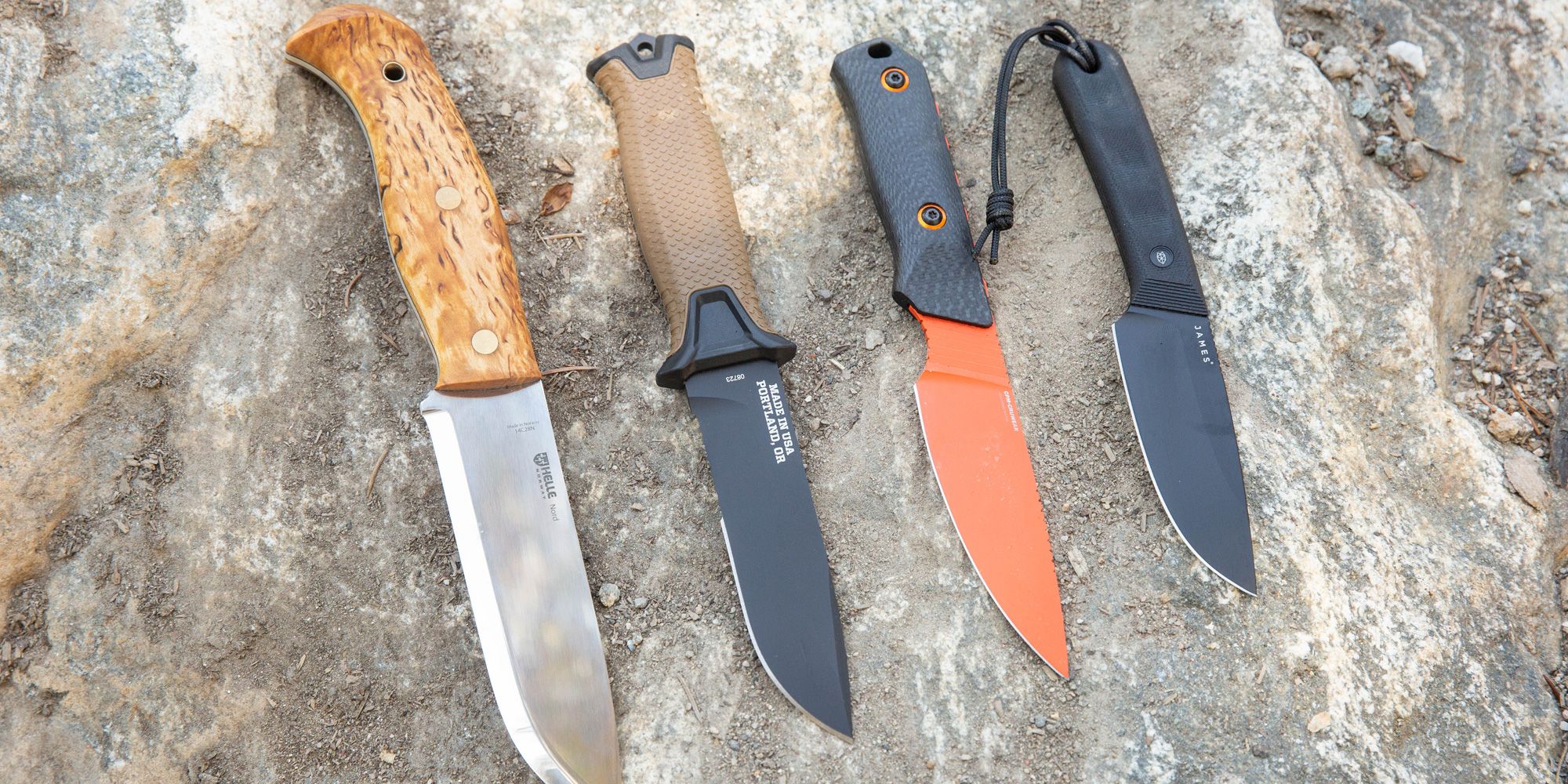
Credit: www.popularmechanics.com
Sharpening Tools And Kits
The Survivalist’s Guide to Hunting Knives provides valuable insights into sharpening tools and kits. One essential aspect of maintaining a hunting knife’s performance is ensuring its blade remains sharp. Portable sharpening kits offer convenience and portability for field sharpening. These kits come with various tools specifically designed for sharpening hunting knives, including sharpening stones, honing rods, and diamond-coated files. They are compact and lightweight, making them easy to carry on hunting trips. A good portable sharpening kit is a must-have for every survivalist, as it ensures that your hunting knife remains razor-sharp in any situation.
In addition to portable kits, there are utility tools available for field sharpening. These tools are designed for quick touch-ups and repairs on the go. They usually consist of a compact sharpener with different sharpening angles and grits. Some utility tools also include additional features like a fire starter or a screwdriver, providing versatility in outdoor situations. Field sharpening tools are designed to be rugged and durable, capable of withstanding harsh conditions. Investing in a reliable portable sharpening kit or utility tool is essential for every survivalist, ensuring that their hunting knives are always ready for any hunting or survival scenario.
Additional Tools And Accessories For Hunting Knives
When it comes to hunting knives, there are a few additional tools and accessories that can significantly enhance your hunting experience. These tools are specifically designed to complement the functionality of the knife and provide you with added convenience in the wild.
- Gut Hooks: A gut hook is a small specialized tool that can be attached to the spine of the hunting knife. It helps in safely and efficiently opening the abdomen of a game animal while minimizing the risk of piercing organs. A gut hook ensures precision and prevents the accidental contamination of meat with intestines.
- Saw Blades: Having a saw blade as an attachment to your hunting knife can be invaluable when it comes to processing game animals. It allows you to easily and quickly cut through bones and joints, making the butchering process more manageable.
- Fire Starter Kits: In the wild, having the means to start a fire is crucial. Fire starter kits containing a ferrocerium rod, striker, and tinder are essential additions to your hunting gear. They provide you with the ability to quickly start a fire for warmth, cooking, and signaling for help.
Conclusion
To sum it all up, hunting knives are an essential tool for survivalists in the wild. These versatile blades serve numerous purposes, from skinning and dressing game to building shelters and crafting makeshift tools. When selecting a hunting knife, it is crucial to consider factors such as blade material, size, and handle grip to ensure it suits your needs.
Additionally, maintaining and sharpening your knife is vital for its longevity and optimal performance. Remember, safety should always be a top priority when handling a hunting knife, so make sure to practice responsible knife usage and keep it properly stored.
Armed with the right skills and knowledge, a well-chosen and well-maintained hunting knife can be the ultimate companion for any survivalist in their quest to conquer the great outdoors. So, choose wisely, hone your skills, and embark on your hunting expedition with confidence!

